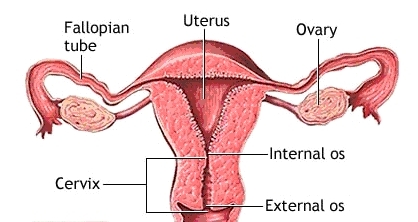The lower end of the uterus is a narrow, tubular-shaped structure that is called the cervix. It extends into your vagina and fills with secretions during pregnancy to form a protective barrier called the mucus plug. When you're pregnant, your cervix is in a firm, long and closed position until the third trimester. It is possible to check if you're pregnant by checking the position of cervix in early pregnancy, but it's not a highly reliable way of confirming.

What Does Cervix Feel Like in Early Pregnancy?
Knowledge about the position and of cervix in early pregnancy helps a lot in determining if you're pregnant or not. Your cervix is likely to rise up and feel soft during early pregnancy. However, the opening of the cervix will remain closed and this usually happens as early as 12 hours after ovulation.
A non-pregnant cervix usually feels like a fruit that hasn't ripened yet, but it becomes soft during pregnancy mainly because it contains more blood. The increase in blood flow to your pelvic area and cervix is due to rising levels of estrogens in your body during pregnancy.
Timing of Rise
Even though your cervix in early pregnancyshould rise, there is no set time when that will happen. Every woman experience things differently and it is very much possible to have a low cervix even when you're pregnant because your body may not be yet ready for pregnancy.
There are cases in which a woman's cervix wouldn't rise up during the first month of pregnancy. It means that you cannot always tell you're pregnant just by checking the position of your cervix. You should go see your doctor to confirm a successful conception.
How to Check Your Cervix Position
Before you can check your cervix position, you first need to locate it. It's the lowermost part of your uterus and is usually located 3-6 inches inside your vagina. It generally feels like a small donut with a tiny hole in its center. Now that you know what you'll be looking for, pay attention to the following steps to check the position of cervix in early pregnancy.
1. Wash your hands properly with soap and warm water to avoid transmitting bacteria to your reproductive system. Don't use any hand cream or lotion to prevent vaginal infection.
2. Trim your nails and ensure that your fingers won't cause an injury to your cervix or vagina.
3. Get in a sitting position to access your cervix with ease.
4. Gently move your longest finger into your vagina. If you feel dry, you can use a water-based lubricant on your finger to glide it in easily.
5. You may have to insert your fingers up to a few inches before you could feel your cervix. Your cervix may feel soft like pursed lips if you're ovulating or firm like the tip of your nose if you're not pregnant.
Cervical Mucus Changes in Early Pregnancy
Your cervical mucus will change during pregnancy. It may not resemble an egg white if you're not pregnant; instead, it will be thick, clear and viscous. This mucus will also turn into your mucus plug during early pregnancy and you won't notice your vagina as slippery as it was before pregnancy.
Your cervical mucus will also tell a bit about your health. You may be dealing with an infection if you notice unpleasant smell, yellow or green color of discharge and secretion that comes with itching. You should see your doctor immediately if you experience these symptoms. You don't have to worry about anything though if your implantation discharge is transparent, smells okay, and has normal consistency. Just maintain proper hygiene to avoid infections.
Cervical Length in Early Pregnancy
Cervical length during pregnancy is usually associated with preterm labor that begins before you're 37 weeks pregnant. A premature birth is likely to happen when your cervix is still short. Under normal circumstances, your cervix is rigid and close. It opens up gradually as your baby grows. If it opens up too soon, you may have to deal with premature births. A number of factors can change the cervical length during pregnancy, for instance:
- An over-stretched uterus
- Biological difference among different women
- Bleeding complications
- Inflammation and infection of the uterine lining
- Incompetent cervix
Just like you should know the position of your cervix in early pregnancy,it is also important to understand the symptoms of preterm labor which may include low and frequent contractions, vaginal spotting, dull backache or pelvic pressure.
